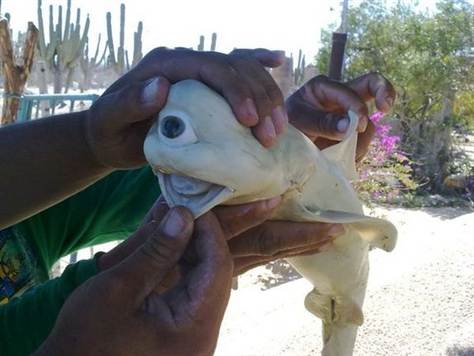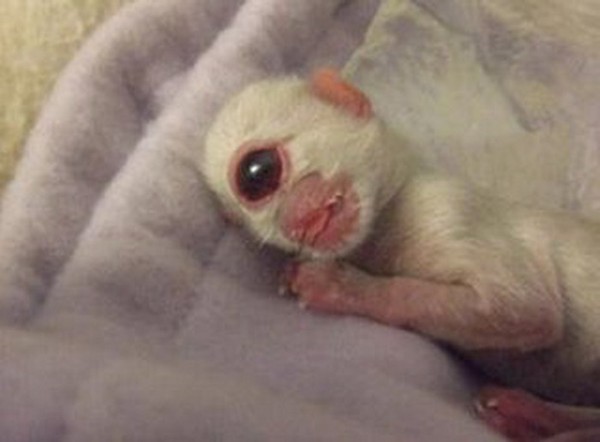Animals born with only one eye are a genetic mutation that can cause death before or shortly after birth. Monocular mutations occur mainly in mammals, including humans.

According to scientific explanations, this deformity is caused by failure in the formation of the forebrain and nasal cavity. However, its root cause is still speculated to be due to the harmful effects of toxins as well as increasing environmental pollution on Earth.
From one-eyed aquatic animals…
This shark fetus was discovered by a fisherman on the coast of the Sea of Cortez in California, USA in July 2011.
 One-eyed gray shark fetus.
One-eyed gray shark fetus.At first glance, this 56cm long gray shark fetus is difficult to convince many people because the single eye in front of the head looks like a product of photoshop. They think that these eyes look more like those of a cartoon character than a shark.However, after verification, scientists have confirmed that this is a truly mutated shark fetus.
Cattle farming
Perhaps the most recorded mutations in cattle belong to goats. Just at a glance, the world has published at least more than 4 cases of one-eyed goats from 1997 to present.
 One of the one-eyed goats noted by Ripley’s Believe or Not.
One of the one-eyed goats noted by Ripley’s Believe or Not.One-eyed goats are all described as having… monkey-like faces. The opening scene is the discovery of the skull of a one-eyed goat found in Texas, USA. Next was the birth of a white goat in Durban, South America. By 2010, the city of Clinton, Southern California, welcomed the birth of the next one-eyed goat.
Particularly in sheep, science has proven that one-eyed mutations often occur when mother sheep eat stinky cabbage containing Cyclopamine. The phenomenon of monocular mutations in sheep has been recorded several centuries ago. Since the 17th century, the birth of the “one-eyed monster” has shocked science. Then in the years 1920, 1964, 2005 and 2006, the world continued to welcome new members of the “one-eyed giant” club.
To other animals
In addition to the outstanding mutation cases that concern the whole world, there are also many cases of one-eye mutations, which medical science still calls the one-eyeball monster.
In 2005, the unfortunate kitten died shortly after being born. In most studies, these mutations usually do not persist after birth.
 The famous one-eyed cat in 2005.
The famous one-eyed cat in 2005.In addition, turtles, dogs, rats, chickens, deer or pigs are also on the list of at-risk situations. Most notable is the case of a baby girl weighing 2.8 kg born on August 13, 1982 and another case recorded in 1974.
However, the mutagenic agent in humans is diagnosed as being caused by genes, not by toxins or the environment like in animals.





